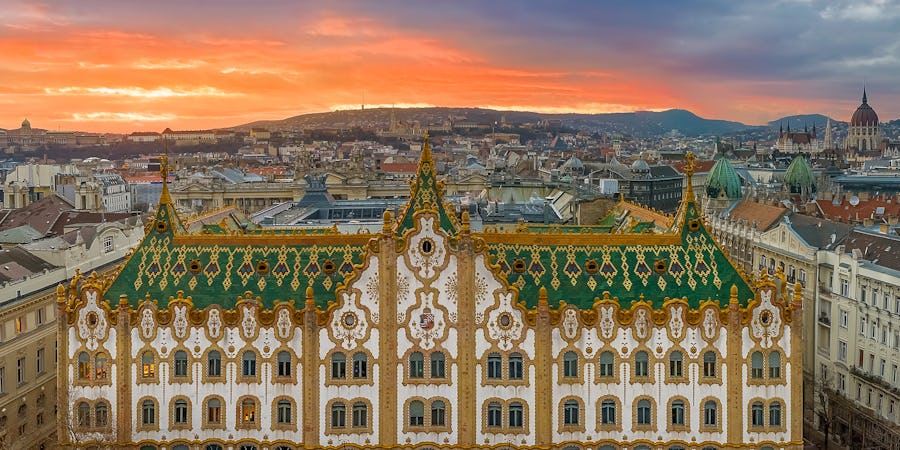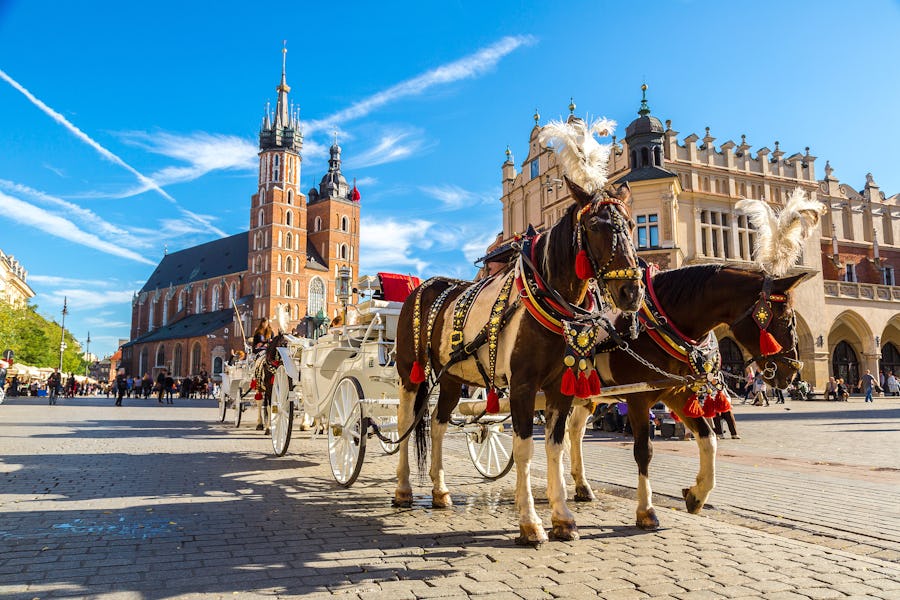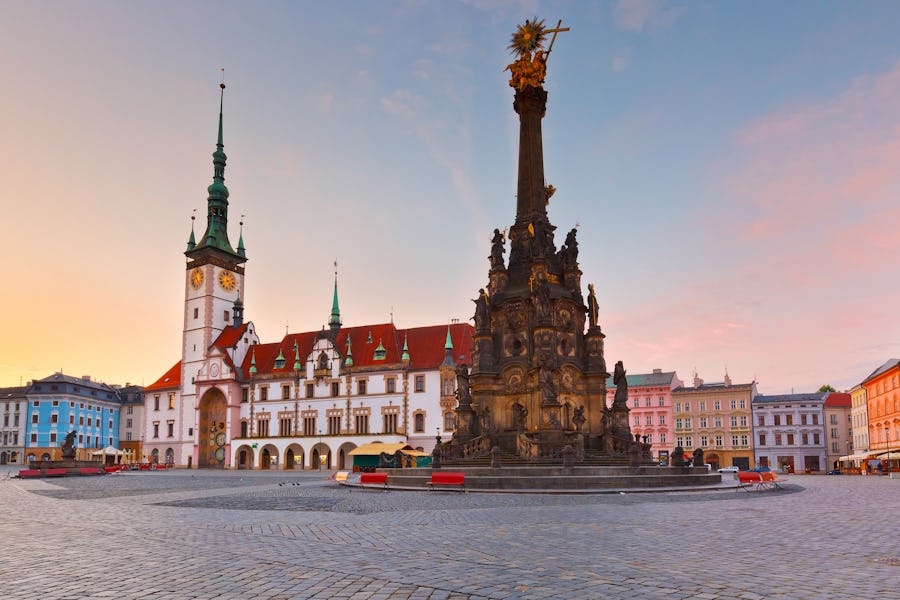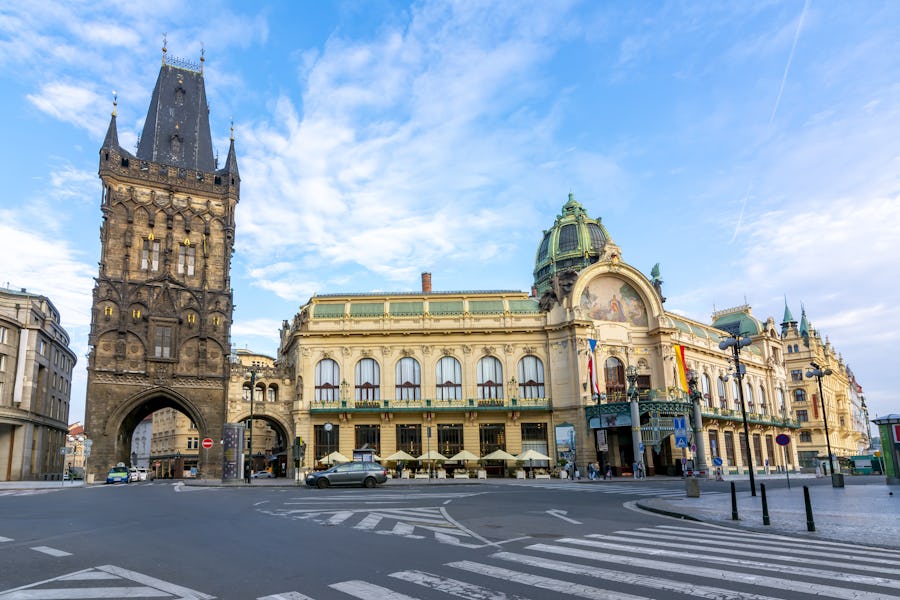3-Day Art Nouveau Adventure in Central Europe
The great Austria-Hungarian empire was flourishing in the last portion of the 19th century. With this came a great new art style -- Art Nouveau, or "Secession" as it was called in Central Europe. Art Nouveau was a conscious rejection of the grand displays of Neoclassicism and Romanticism that dominated the beginning of the century. Instead, it emphasized the young and natural, with independence of artists being regarded for the first time. Oftentimes, Art Nouveau was inspired by the natural forms of life, like plants and flowers, as well as natural curves that you might find in flora and fauna.While Western Europe had its own Art Nouveau scene, Vienna was the epicentre Secession style in Central and Eastern Europe. Viennese artists, tired of trained historicism, created an association with a platform in the magazine ”Ver Sacrum”. From this, the movement spread to cities with already vibrant artistic scenes; Budapest, Krakow, and Prague. Experience the ingenuity, history, and beauty of this visionary style with our 3-day trip through Central Europe.
Your Art Nouveau in Central Europe Itinerary:
Day 1: Vienna to Budapest (stop in: Bratislava)
Day 2: Budapest to Krakow (stop in: Kosice)
Day 3: Krakow to Prague (stop in: Olomouc)
Day 1: Vienna to Budapest

The centre of the Vienna Secession, you can know you're in for some great examples of Art Nouveau. Some of the standouts remain in use today, like the Karlsplatz Stadtbahn (1899), which is still part of the Viennese Metro! Other standouts include the Majolica House, Kirche am Steinhof and the famous Secession Hall. This striking exhibition hall even houses a frieze by Gustav Klimt!
Bratislava

Just a stone's throw from Vienna, Bratislava, Slovakia, connected Austria with Eastern Europe. As people passed through town, so too did Art Nouveau ideals. During your 2-hour visit, check out the Blue Church's beautiful interior and exterior. The Grand Hotel is also another famous example of Art Nouveau architecture in this dynamic city.
Arrival in Budapest

The other capital of Austria-Hungary, Budapest quickly followed Vienna’s lead in the Art Nouveau craze. While Budapest's UNESCO-listed waterfront is what draws most visitors, the city easily rivals Vienna for sumptuous Art Nouveau architecture. You could easily spend a day in Budapest tracking down the work's of its most renowned Art Nouveau Architect, Ödön Lechner, "The Hungarian Gaudi".But we'd start at the Gellert Baths, one of the most famous spas in the world. From the ornate facade to the colorful tiles and kaleidoscopic stained glass ceiling, it's the perfect place to soak in Budapest's grand Secession architecture. Afterwards, you can start seeking out the city's other Art Nouveau treasures.The Thonet House and Lindenbaum House are worth tracking down to admire their colorful facades. Things get ever grander once you head to Secession Palaces. Gresham Palace now houses the Four Seasons hotel. Fortunately, you can go inside and admire the interior decor even if you're not a guest.
Art Nouveau even spilled into public buildings. The Institute for Geology and Institute for the Blind are both stunning and open to visitors. The Museum of Applied Arts is another notable sight, where the colorful ceramic decor takes cues from international art styles.
Duration: 5 hours and 12 minutesBook a car from Vienna to Budapest
Day 2: Budapest to Krakow
When you're done with the cultural smorgasbord in Hungary's capital, head from Budapest to Krakow, the northernmost point of the former Austro-Hungarian Empire.
Kosice
With one of the largest preserved historical centres in Slovakia, Kosice boasts not only Art Nouveau architecture, but also marvels of Gothic, Renaissance and Baroque. One of the most surprising attractions the cemetery and its Secession-style headstones. The Slavia Hotel and its fantastic frescoes is another standout on your one-hour visit.
Arrival in Krakow

The second most important city in Poland, Krakow has one of the best-restored historical centres in Europe. Art Nouveau in Poland was very much centered in Krakow, and didn't spread much further east.Start with the quaint Church of Holy Heart of Jesus with its signature red bricks and unique fresco at the roof’s base. The iconic House Under the Globe is a unique blend of Baroque architecture with Art Nouveau embellishments. Don't miss the Museum of Stained Glass - an Art Nouveau building, with a kaleidoscopic collection spanning centuries. If you need a lunch break, try the Jama Michailka cafe, where you can admire the Art Nouveau interior while enjoying a delicious meal!Duration: 8 hoursBook a car from Budapest to Krakow
Day 3 Krakow to Prague
You have taken a nice sojourn in beautiful Krakow, and taken in the Polish city of culture. Complete your trip through Central Europe and go to Prague -- the City of a Hundred Spires.
Olomouc

An eclectic city filled with history, Olomouc is Czech Republic’s best kept secret. During your 90-minute visit to its UNESCO-listed historic center, you'll find beautiful architecture from every era. Countless apartments, hotels and cafes were built in the Art Nouveau style, but the Villa Primavesi and Pension U Jakuba are arguably the most impressive.
Arrival in Prague

The crown jewel of Central Europe, Prague was once the elegant seat of the Bohemian Kingdom. From the magnificent Old Town to the curious Lesser Town, you have heaps and heaps of stunning architecture to sift through. Prague is a city to walk around, to immerse and discover. You can forget about the worries and the stress, which makes is the best place to end your thematic trip!Prague grew at great speeds in the 19th century, so to meet demand, new architects created new, beautiful buildings. To them, Prague was their artistic playground; their canvas. The Hotel Central was one of the first Art Nouveau buildings in Prague. Although it's not a hotel anymore, the facade is still there to admire. Surprisingly, one of the most beautiful Secession buildings is Central Station. With asymmetry all around, floral patterns, beautiful frescoes, and stained glass, it's a real standout. But Prague has so many Art Nouveau buildings that there isn't room to list them all. Instead, explore the UNESCO-listed city center to see an amazing ensemble of Secession, Baroque, Gothic, and Modern.Prague is extra-special to Art Nouveau lovers as it was home to Alphonse Mucha, one of the movement's most iconic artists. You should of course check out the collection of his works, ranging from drawings to advertisements to bank notes, at the Mucha Museum. To see his works in wild, pay a visit to St. Vitus Cathedral for the stained glass, and then to what's arguably one of Prague's more beautiful buildings: the Municipal House. Mucha was just one of the many revolutionary artists employed to decorate the interior. In particular, Mucha designed the Lord Mayor's Hall from floor to ceiling.Duration: 7 hours and 11 minutesBook a car from Krakow to Prague
Ready for your Art Nouveau Tour of Central Europe?
Here's each leg of the tour through Central Europe, so you can lose yourself in the revolutionary beauty of the Art Nouveau.

